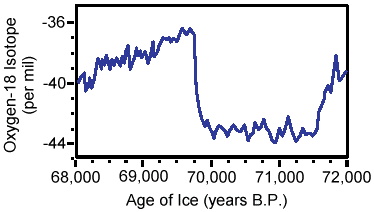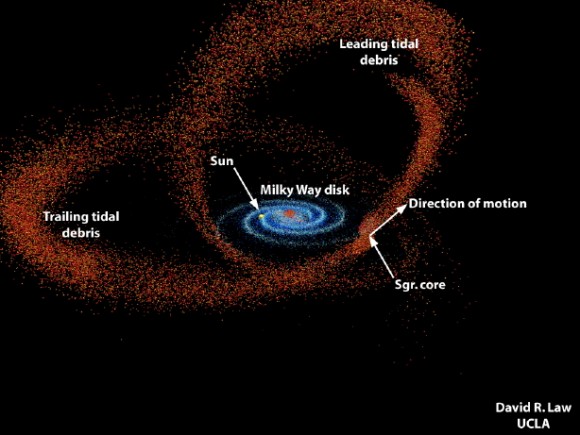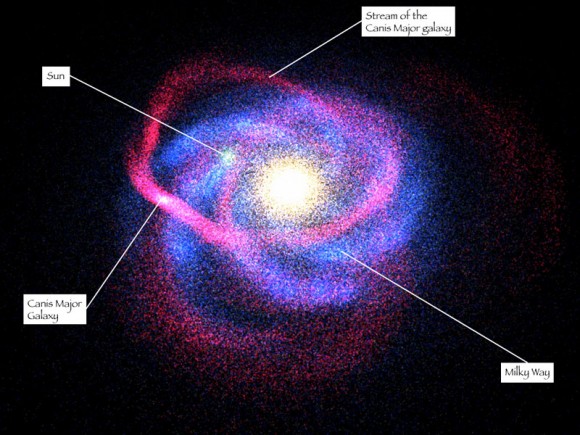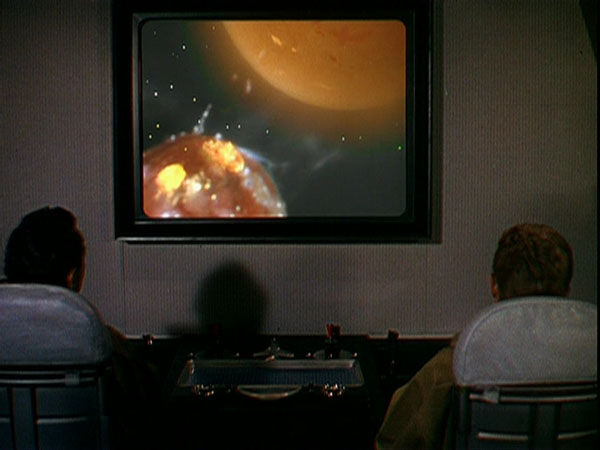It looks like you're using an Ad Blocker.
Please white-list or disable AboveTopSecret.com in your ad-blocking tool.
Thank you.
Some features of ATS will be disabled while you continue to use an ad-blocker.
share:
originally posted by: intergalactic fire
a reply to: ngchunter
No, not if planets settle themselves by (elektro)magnetisme and not by gravity.
If I remember well from the theory.
They don't. The planets orbits are predictable using the formulas for gravity, not the formulas for magnetism.
originally posted by: intergalactic fire
a reply to: ngchunter
What's the time frame between the shots?
Couldn't tell you. The server is down right now, I can't access the data anymore. It's decades worth of time though.
edit on 19-2-2015 by
ngchunter because: (no reason given)
*Site is back up now, apparently undergoing maintenance today. It's 30 years between the shots. 1955-1985
edit on 19-2-2015 by ngchunter
because: (no reason given)
originally posted by: FlyInTheOintment
I'm little baffled that nobody has tried to explain the second moving star in ngchunter's .gif...?
I was expecting a Phage slam-dunk within about two minutes, but a day later and nothing..?!
I found an ID for the star in the USNO-B1.0 catalog. I astrometrically solved the section of the POSS2 plate containing the star (nova.astrometry.net... ) and loaded it up in SAOImage DS9 in order to overlay the USNO-B1.0 catalog. The star's position of course differs from where it had been in the older POSS2 plate but I found the ID.

The red circle shows where it is in the POSS2 plate, the slightly thicker green circle with the white box in the center shows where it is in the USNO-B1.0 catalog. There's a background star in between but it has not detectable proper motion in the USNO catalog so cannot be the star in question. The USNO ID for the runaway star is USNO-B1.0 0812-0137446. Here are the proper motion values according to USNO: pmRA: 102 pmDE: -168 (in mas/yr). Other information in the USNO entry for it indicates it's a very red star. B magnitude is 18+ but R magnitude is only 15+. I want to see if I can locate it in the WISE imagery.
edit on 19-2-2015 by ngchunter because: (no reason given)
originally posted by: wildespace
I calculate that if this star moved from 1 ly to 20 ly in 70,000 years, it moved at the rate of 1 ly per 3500 years, or 191,605 mph (308,358 kph). That's one speedy star.
So about 86 km/s velocity. That makes sense, this paper reports a "low tangential velocity" for the star at about 3 .5 km/s. So most of the velocity is radial, away from us. Makes sense.
arxiv.org...
It's actually not terribly surprising then to see another star with even higher proper motion; it implies higher tangential velocity but does not necessarily imply higher radial velocity.
a reply to: Hijinx
"...never visible."
Says the 'experts' ... pffft... I say the light pollution was much less back then, unless Uhg (next cave over) was bbq-ing an especially big mega-fauna, and folk's eyes were likely sharper... before they dropped dead from a tooth infection at 23, anyway, so even a couple dim stars passing by, millions of miles away, might, just might be glimpsed... and not just by the 'em effects' it caused.
But thank you for the clarification... and I wonder what 'em effects' it produced that could have been seen (according to the article)? Any astronomers or generally informed savants wanna illuminate that?
"...never visible."
Says the 'experts' ... pffft... I say the light pollution was much less back then, unless Uhg (next cave over) was bbq-ing an especially big mega-fauna, and folk's eyes were likely sharper... before they dropped dead from a tooth infection at 23, anyway, so even a couple dim stars passing by, millions of miles away, might, just might be glimpsed... and not just by the 'em effects' it caused.
But thank you for the clarification... and I wonder what 'em effects' it produced that could have been seen (according to the article)? Any astronomers or generally informed savants wanna illuminate that?
originally posted by: Baddogma
a reply to: Hijinx
"...never visible."
Says the 'experts' ... pffft... I say the light pollution was much less back then,
Light pollution was accounted for in that statement. There is a limit to human vision regardless of light pollution.
unless Uhg (next cave over) was bbq-ing an especially big mega-fauna, and folk's eyes were likely sharper...
The basic chemistry of human vision would need to be fundamentally different, or the eyes themselves would need to be significantly larger, in order to make a difference.
before they dropped dead from a tooth infection at 23, anyway, so even a couple dim stars passing by, millions of miles away, might, just might be glimpsed...
Not while it was at magnitude 10. Not even close. Even under perfect conditions with perfect vision you're not going to break magnitude 8 by eye. Now if it flared up, fine, but for the most part no.
Just a bit of curiosity. Here we have a significant rise in Earth's Oxygen-18 levels (and likely temperature) in less than 1,000 years after the star
passed by. Maybe there wasn't an immediate effect. Maybe it was a coincidence.


edit on 19-2-2015 by Blue Shift because: (no reason given)
a reply to: Blue Shift
we have an "van oort"belt....
that star could also had such an belt of dust...
how much 0.? lichtyears is the diameter of oure oort-belt ?
we have an "van oort"belt....
that star could also had such an belt of dust...
how much 0.? lichtyears is the diameter of oure oort-belt ?
a reply to: ngchunter
Heh, thanks... I think ...sometimes my attempts at humor need a better ...er, attempt.
But the article mentions that although not visible to the naked eye, the pass through could have caused some "electromagnetic effects" that could've been seen... so what does that mean? Any ideas?
Heh, thanks... I think ...sometimes my attempts at humor need a better ...er, attempt.
But the article mentions that although not visible to the naked eye, the pass through could have caused some "electromagnetic effects" that could've been seen... so what does that mean? Any ideas?
originally posted by: ngchunter
originally posted by: FlyInTheOintment
I'm little baffled that nobody has tried to explain the second moving star in ngchunter's .gif...?
I was expecting a Phage slam-dunk within about two minutes, but a day later and nothing..?!
I found an ID for the star in the USNO-B1.0 catalog. I astrometrically solved the section of the POSS2 plate containing the star (nova.astrometry.net... ) and loaded it up in SAOImage DS9 in order to overlay the USNO-B1.0 catalog. The star's position of course differs from where it had been in the older POSS2 plate but I found the ID.
The red circle shows where it is in the POSS2 plate, the slightly thicker green circle with the white box in the center shows where it is in the USNO-B1.0 catalog. There's a background star in between but it has not detectable proper motion in the USNO catalog so cannot be the star in question. The USNO ID for the runaway star is USNO-B1.0 0812-0137446. Here are the proper motion values according to USNO: pmRA: 102 pmDE: -168 (in mas/yr). Other information in the USNO entry for it indicates it's a very red star. B magnitude is 18+ but R magnitude is only 15+. I want to see if I can locate it in the WISE imagery.
Here's the WISE image overlaid on top of the POSS2 image of Scholz's star:

You can see how much brighter it is in infrared than in visible light. The other star doesn't show nearly as much of a difference.
edit on
19-2-2015 by ngchunter because: (no reason given)
Nice...
A Rouge Star Doing a Fly By 70,000 year Ago...
Im not Surprised
Why?

Get it yet ?
There is 3 Minor Galaxy s merging within Our Milky Way
Milky Way Owes Its Shape to Crashes With Dwarf Galaxy
by Charles Q. Choi, Space.com Contributor | September 14, 2011 01:01pm ET
www.space.com...
COLLIDING DWARF GALAXY TRIGGERED FORMATION OF MILKY WAY’S SPIRAL ARMS
REVEALED BY SUPERCOMPUTER SIMULATION AT
UNIVERSITY OF CALIFORNIA, IRVINE
hipacc.ucsc.edu...
Sagittarius Dwarf Elliptical Galaxy
(SagDEG)
www.solstation.com...
Published in September 15, 2011 issue of Nature Magazine
hipacc.ucsc.edu...
So what we have is that ... Possibly... We have a Rouge Star System
Passing us from another Galaxy that is merging that has been merging with OUR Milky Way Galaxy in the last 2 Billion years ... and may more to Come...

What is the Closest Galaxy to the Milky Way?
by Nicholos Wethington on December 8, 2008
www.universetoday.com...

We’re Not From The Milky Way Galaxy! We’re Sagittarians, Say Scientists! What Of Earth's Future
www.abovetopsecret.com...
Reminds me of !
As Worlds Collide !


But on a Note !
when people are saying about the mass extinction !
also perhaps its also because Our
Solar System goes Through Electrical Charge intergalactic Clouds every So often in the Galaxy Year!
( Lots of Info and Links in the Subject )
Is the Local Interstellar Cloud affecting us in any way?
www.abovetopsecret.com...
Seven or Eight Dwarf Galaxies Discovered Orbiting the Milky Way
Jan 09, 2007
phys.org...
Just Throwing a log in the Fire Folks !
A Rouge Star Doing a Fly By 70,000 year Ago...
Im not Surprised
Why?

Get it yet ?
There is 3 Minor Galaxy s merging within Our Milky Way
Milky Way Owes Its Shape to Crashes With Dwarf Galaxy
by Charles Q. Choi, Space.com Contributor | September 14, 2011 01:01pm ET
www.space.com...
COLLIDING DWARF GALAXY TRIGGERED FORMATION OF MILKY WAY’S SPIRAL ARMS
REVEALED BY SUPERCOMPUTER SIMULATION AT
UNIVERSITY OF CALIFORNIA, IRVINE
hipacc.ucsc.edu...
Sagittarius Dwarf Elliptical Galaxy
(SagDEG)
www.solstation.com...
Published in September 15, 2011 issue of Nature Magazine
hipacc.ucsc.edu...
So what we have is that ... Possibly... We have a Rouge Star System
Passing us from another Galaxy that is merging that has been merging with OUR Milky Way Galaxy in the last 2 Billion years ... and may more to Come...

What is the Closest Galaxy to the Milky Way?
by Nicholos Wethington on December 8, 2008
www.universetoday.com...

We’re Not From The Milky Way Galaxy! We’re Sagittarians, Say Scientists! What Of Earth's Future
www.abovetopsecret.com...
Reminds me of !
As Worlds Collide !


But on a Note !
when people are saying about the mass extinction !
also perhaps its also because Our
Solar System goes Through Electrical Charge intergalactic Clouds every So often in the Galaxy Year!
( Lots of Info and Links in the Subject )
Is the Local Interstellar Cloud affecting us in any way?
www.abovetopsecret.com...
Seven or Eight Dwarf Galaxies Discovered Orbiting the Milky Way
Jan 09, 2007
phys.org...
Just Throwing a log in the Fire Folks !
edit on 42015ThursdayfAmerica/Chicago249 by Wolfenz because: more Links
edit on 42015ThursdayfAmerica/Chicago249 by Wolfenz
because: (no reason given)
originally posted by: ngchunter
a reply to: Wolfenz
Please show us proof that the proper and radial motion of this star is consistent with the Sagittarius dwarf.
I DID check out the links I Posted !
Please Research and Read them... thanks ...
Ever heard of a Rouge aka Stray
Planet ?
en.wikipedia.org...
Star ?
An intergalactic star, also known as a rogue star, is a star that is not located within a galaxy. These stars were a source of much discussion in the scientific community during the late 1990s and are generally thought to be either the result of galaxies colliding, or a binary star pair travelling too close to a black hole (which can be found at the center of many galaxies).
en.wikipedia.org...
Sagittarius dwarf Galaxy is merging within our Solar Path so is the Canis major Galaxy
so of Course you are going to have Rough Planets and Stars .... you dont think from millions to billions of stars and their planted wont go as stay in the merging We are Talking about 2 Billion Years in the Merging here Sling Shot all over the place Ahh Meant Galaxy like the First Crack at the Billiard Table ... Then Again Scientist are going buy a Super Computer Generating a Simulation of the Collisions What ever Scientist Calculation that Feed into it I Must Admit it a lot harder then a Nuclear Explosion Direction Calculation .. See the link I Posted
The Canis Galaxy is Closer to Our Solar system then we are to the Center of Our Galaxy
( The Dispute )
Canis Major Overdensity
en.wikipedia.org...
edit on 42015ThursdayfAmerica/Chicago249 by Wolfenz because: (no reason given)
Well a Brown Dwarf is coming! That I do know and its in most of our lifetimes. It passed pretty close to us in 2010 and it will be even closer on its
way back out. (Way to close). In 2010 we had the moon or earth get completely yanked out of whack along with the massive quake in Japan and a few
other large ones. A lot of people seen the moon or earth getting pulled so bad the man on the moon showed it well.
Today native Indian tribes will state on the record that the stars are not where they should be as they can not navigate by them anymore and the seasons have changed so that tells its earth that is getting pulled on so much its tilting more.
Wormwood in the book of Revelation in the Bible is one mans ancient description of this star, as a man of his time could only describe as a warning to a future high tech generation.
A Brown Dwarf is made mostly of Iron (Oxide Rust) anyone who has used a torch on rusty steel would know what happens when you hit rust with it. In this case our atmosphere is the torch to anything getting to close to earth. When this Brown Dwarf skims our Atmosphere it will cause what?? FIRE AND BRIMSTONE!!!
Rust aka Iron Oxide does what to water? It makes it bitter just like the plant Wormwood does when soaked in water.
This was the Prophets warning on what to look out for. In the last ten years there has been a fury of Infra Red telescopes being build and put in space, even the Vatican has a large one in Arizona. They BS you all and say they are looking for ET lol.
The only way earth will get any advanced warning is with an Infra Red telescope. The Vatican does not want to be beholden to another Government for this vital information. That is the only way to spot them until they get close enough to the sun. Then its too late for anyone.
When the big quakes start up again pay close attention to the moon, when it does not look right then you know its returning and if you have a bunker, now would be the time to dig in.
Today native Indian tribes will state on the record that the stars are not where they should be as they can not navigate by them anymore and the seasons have changed so that tells its earth that is getting pulled on so much its tilting more.
Wormwood in the book of Revelation in the Bible is one mans ancient description of this star, as a man of his time could only describe as a warning to a future high tech generation.
A Brown Dwarf is made mostly of Iron (Oxide Rust) anyone who has used a torch on rusty steel would know what happens when you hit rust with it. In this case our atmosphere is the torch to anything getting to close to earth. When this Brown Dwarf skims our Atmosphere it will cause what?? FIRE AND BRIMSTONE!!!
Rust aka Iron Oxide does what to water? It makes it bitter just like the plant Wormwood does when soaked in water.
This was the Prophets warning on what to look out for. In the last ten years there has been a fury of Infra Red telescopes being build and put in space, even the Vatican has a large one in Arizona. They BS you all and say they are looking for ET lol.
The only way earth will get any advanced warning is with an Infra Red telescope. The Vatican does not want to be beholden to another Government for this vital information. That is the only way to spot them until they get close enough to the sun. Then its too late for anyone.
When the big quakes start up again pay close attention to the moon, when it does not look right then you know its returning and if you have a bunker, now would be the time to dig in.
originally posted by: ngchunter
originally posted by: FlyInTheOintment
I'm little baffled that nobody has tried to explain the second moving star in ngchunter's .gif...?
I was expecting a Phage slam-dunk within about two minutes, but a day later and nothing..?!
I found an ID for the star in the USNO-B1.0 catalog. I astrometrically solved the section of the POSS2 plate containing the star (nova.astrometry.net... ) and loaded it up in SAOImage DS9 in order to overlay the USNO-B1.0 catalog. The star's position of course differs from where it had been in the older POSS2 plate but I found the ID.
The red circle shows where it is in the POSS2 plate, the slightly thicker green circle with the white box in the center shows where it is in the USNO-B1.0 catalog. There's a background star in between but it has not detectable proper motion in the USNO catalog so cannot be the star in question. The USNO ID for the runaway star is USNO-B1.0 0812-0137446. Here are the proper motion values according to USNO: pmRA: 102 pmDE: -168 (in mas/yr). Other information in the USNO entry for it indicates it's a very red star. B magnitude is 18+ but R magnitude is only 15+. I want to see if I can locate it in the WISE imagery.
I matched the star position in Sky-Map.org, and it seems to be this star: server7.sky-map.com...
VizierR page: click
edit on
19-2-2015 by wildespace because: (no reason given)
originally posted by: wildespace
originally posted by: ngchunter
originally posted by: FlyInTheOintment
I'm little baffled that nobody has tried to explain the second moving star in ngchunter's .gif...?
I was expecting a Phage slam-dunk within about two minutes, but a day later and nothing..?!
I found an ID for the star in the USNO-B1.0 catalog. I astrometrically solved the section of the POSS2 plate containing the star (nova.astrometry.net... ) and loaded it up in SAOImage DS9 in order to overlay the USNO-B1.0 catalog. The star's position of course differs from where it had been in the older POSS2 plate but I found the ID.
The red circle shows where it is in the POSS2 plate, the slightly thicker green circle with the white box in the center shows where it is in the USNO-B1.0 catalog. There's a background star in between but it has not detectable proper motion in the USNO catalog so cannot be the star in question. The USNO ID for the runaway star is USNO-B1.0 0812-0137446. Here are the proper motion values according to USNO: pmRA: 102 pmDE: -168 (in mas/yr). Other information in the USNO entry for it indicates it's a very red star. B magnitude is 18+ but R magnitude is only 15+. I want to see if I can locate it in the WISE imagery.
I matched the star position in Sky-Map.org, and it seems to be this star: server7.sky-map.com...
VizierR page: click
Yes, that's the same star, just a different catalog. I don't trust sky-map since anyone can edit it, but it is USNO-A2.0 0750-03964005 according to SAOImage DS9 as well. I used the USNO-B1.0 catalog since it contains more information on the proper motion of the star and under that catalog the ID number is given as 0812-0137446.
originally posted by: Wolfenz
originally posted by: ngchunter
a reply to: Wolfenz
Please show us proof that the proper and radial motion of this star is consistent with the Sagittarius dwarf.
I DID check out the links I Posted !
No, that does not prove that the proper and radial motion of this star is consistent with the Sagittarius dwarf. Yes, I know what a "rogue planet" is. Do you know what the proper and radial motions of a star are?
edit on 19-2-2015 by ngchunter because: (no reason given)
new topics
-
A Merry Christmas.
Other Current Events: 4 hours ago -
Cold Blooded Killers on Christmas!! GRRRRrrr!!
Pets: 11 hours ago
top topics
-
Cold Blooded Killers on Christmas!! GRRRRrrr!!
Pets: 11 hours ago, 9 flags -
Plane Crash Today --Azerbaijanian E190 passenger jet
Mainstream News: 16 hours ago, 6 flags -
A Merry Christmas.
Other Current Events: 4 hours ago, 5 flags
active topics
-
It's Offical Now
US Political Madness • 19 • : Oldcarpy2 -
A Merry Christmas.
Other Current Events • 4 • : AlroyFarms -
Cold Blooded Killers on Christmas!! GRRRRrrr!!
Pets • 11 • : charlest2 -
The Effects of Electric Fields and Plasma on Plant Growth
Science & Technology • 11 • : ChaoticOrder -
Plane Crash Today --Azerbaijanian E190 passenger jet
Mainstream News • 18 • : Springbok -
Mood Music Part VI
Music • 3765 • : BrucellaOrchitis -
‘Something horrible’: Somerset pit reveals bronze age cannibalism
Ancient & Lost Civilizations • 23 • : BrucellaOrchitis -
London Christmas Market BANS Word ‘Christmas’
Social Issues and Civil Unrest • 51 • : Naftalin -
-@TH3WH17ERABB17- -Q- ---TIME TO SHOW THE WORLD--- -Part- --44--
Dissecting Disinformation • 3814 • : brewtiger123 -
The clotting is not going away latest
Medical Issues & Conspiracies • 15 • : NoCorruptionAllowed
